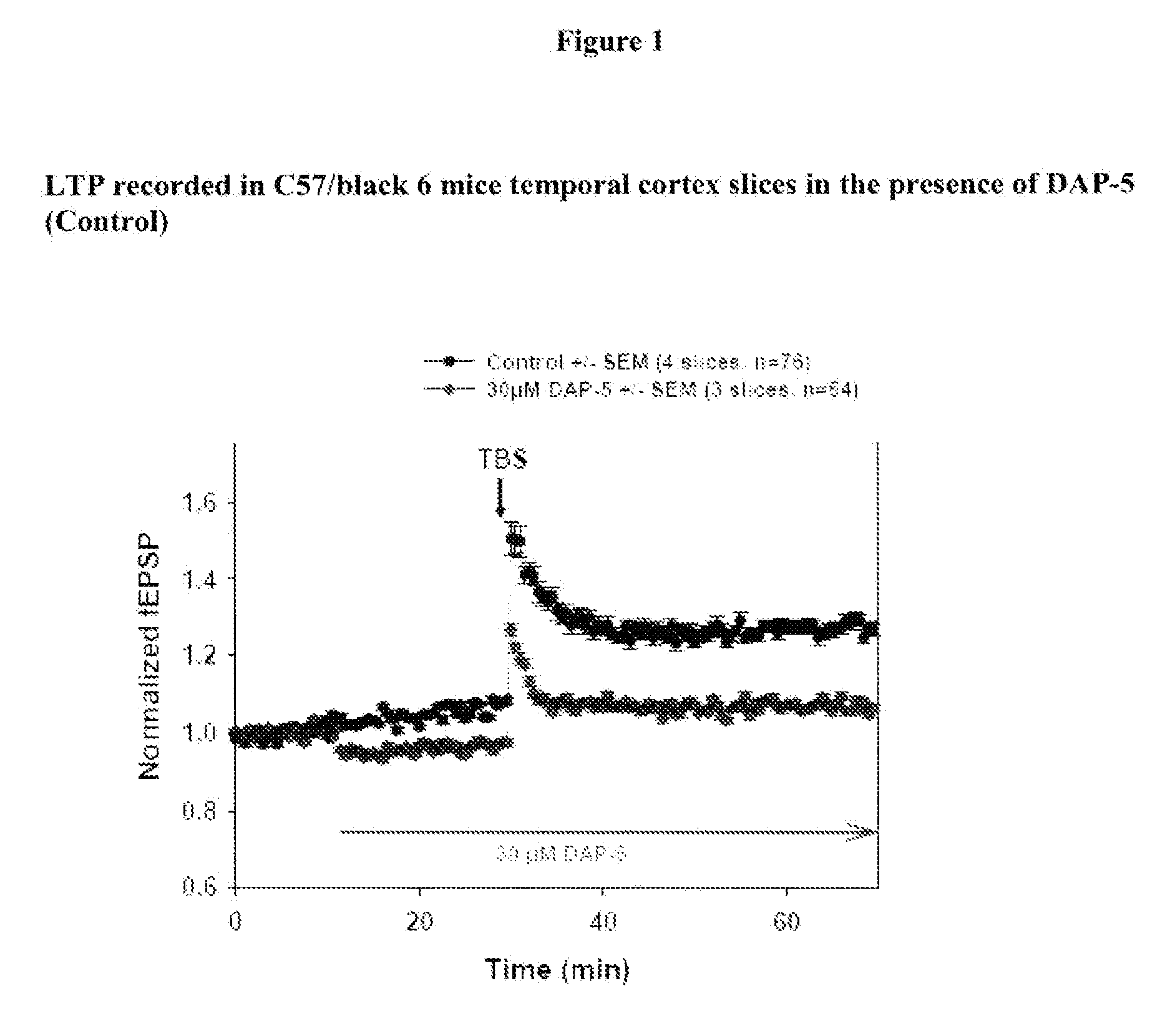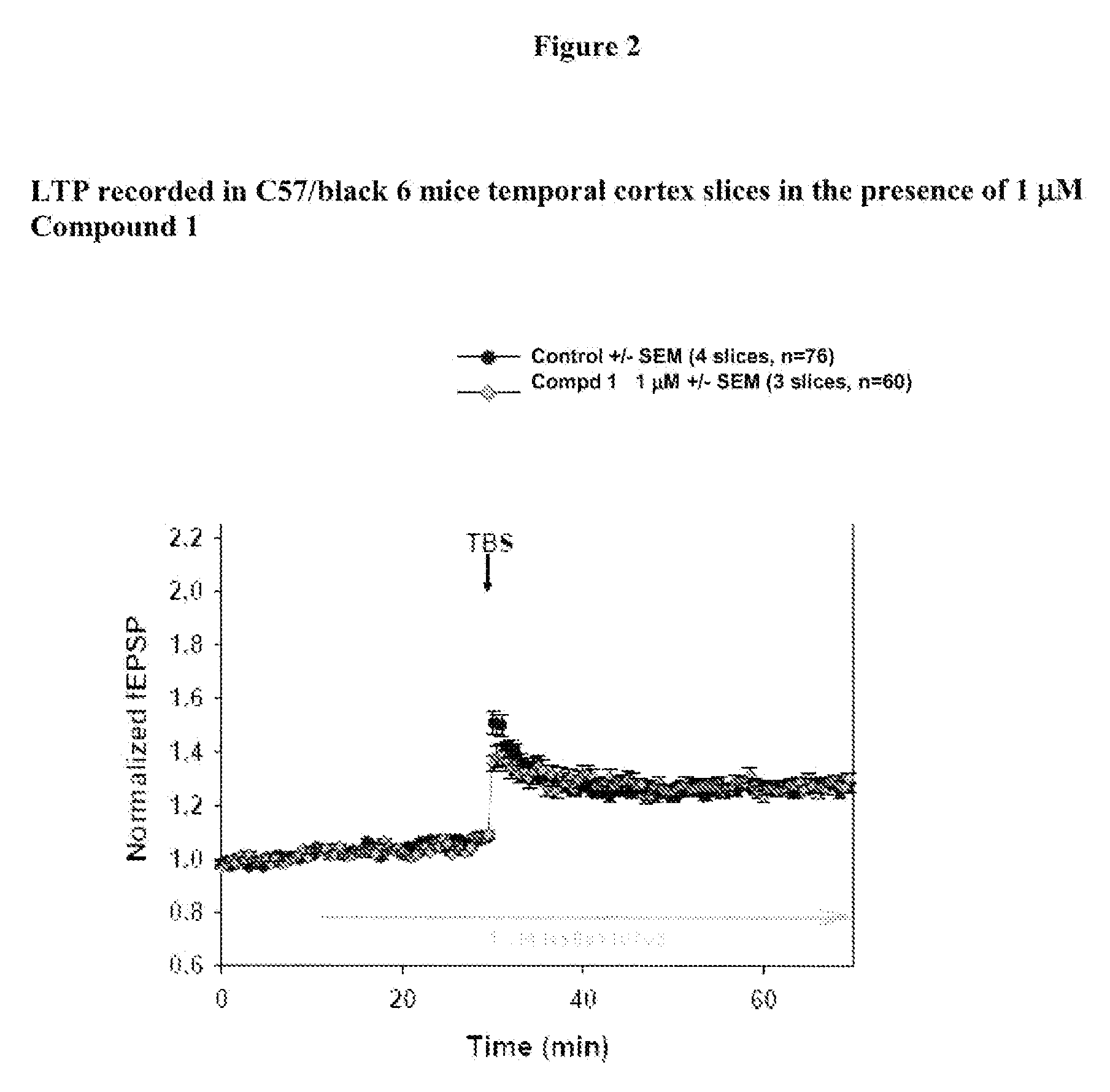Methods for treating neuropsychiatric conditions
a neuropsychiatric and treatment method technology, applied in the field of neuropsychiatric conditions, can solve the problems of ncs imposing an enormous health care burden on society, devastating the quality of life of those affected as well as their families, and affecting the determination of the therapeutically effective amount, so as to improve cognition, memory, mood, and reduce the appearance of pathological or undesired conditions.
- Summary
- Abstract
- Description
- Claims
- Application Information
AI Technical Summary
Benefits of technology
Problems solved by technology
Method used
Image
Examples
example 1
Identification of Compounds Having High Affinity for PAK Active Sites
[0228]The present example describes the identification of small molecule compounds that have high affinity for the active site of one or more PAK isoforms. A competitive binding assay was utilized, which was developed by Ambit, Inc. (San Diego, Calif.), comprising three components: (1) an immobilized kinase “bait” probe (e.g., staurosporine) having high affinity for the catalytic site of multiple kinases; (2) full length PAK or a PAK catalytic domain expressed on the surface of T7 bacteriophage; and (3) a candidate PAK inhibitor substance (“test substance”) in solution in a series of known concentrations. When these three components are combined, the test substance is tested for its ability to compete, in a concentration-dependent manner, with the immobilized kinase bait probe for binding for binding to the phage-PAK catalytic domain. Afterwards, the amount of bait probe-bound phage-PAK is detected, for example, by...
example 2
Slice Electrophysiology Assay for Determination of PAK Inhibitory Activity
[0236]Materials: coronal cortical slices (400 μm) containing temporal cortex from 2- to 3-month-old C57-Black-6 mice male littermates (from Elevage Janvier, FRANCE) are prepared and allowed to recover in oxygenated (95% O2 and 5% CO2) warm (30° C.) artificial cerebrospinal fluid (ACSF) containing 124 mM NaCl, 5 mM KCl, 1.25 mM, NaH2PO4, 1 mM MgCl2, 2 mM CaCl2, 26 mM NaHCO3, and 10 mM dextrose.
[0237]Compound dilution: a 10 mM DMSO stock solution is prepared for each test compound and 100 μL aliquots are stored at−20° C. On the day of experiment an aliquot is thawed and vortexed for fresh solutions preparation. The final concentration of DMSO is adjusted to 0.1% in all solutions, including control ACSF solution.
[0238]Perfusion: Artificial Cerebro-Spinal Fluid (ACSF) is perfused at 3 mL / min. The recording chamber has a volume of 1 mL. Then the chamber medium is renewed every 20 s. The perfusion liquid is maintain...
example 3
Treatment of Schizophrenia by Administration of a PAK Inhibitor in an Animal Model
[0246]The ability of the PAK3-selective inhibitor SU-14813 to ameliorate behavioral and anatomical symptoms of schizophrenia (i.e., their mouse analogs) is tested in a dominant-negative DISC1 mouse model of schizophrenia (Hikida et al (2007), Proc Natl Acad Sci USA, 104(36):14501-14506). The structure of SU-14813 is as follows:
5-[(Z)-(5-fluoro-2-oxo-1,2-dihydro-3H-indol-3-ylidene)methyl]-N-[(2S)-2-hydroxy-3-morpholin-4-ylpropyl]-2,4-dimethyl-1H-pyrrole-3-carboxamide maleate
[0247]Forty DISC1 mice (ages 5-8 months) on a C57BL6 strain background are divided into a SU-14813 treatment group (1 mg / kg oral gavage) and a placebo group (0.1% DMSO in physiological saline solution) and analyzed for behavioral differences in open field, prepulse inhibition, and hidden food behavioral tests, with an interval of about one week between each type of test. In the open field test, each mouse is placed in a novel open fi...
PUM
| Property | Measurement | Unit |
|---|---|---|
| time | aaaaa | aaaaa |
| volume | aaaaa | aaaaa |
| spine morphology | aaaaa | aaaaa |
Abstract
Description
Claims
Application Information
 Login to View More
Login to View More - R&D
- Intellectual Property
- Life Sciences
- Materials
- Tech Scout
- Unparalleled Data Quality
- Higher Quality Content
- 60% Fewer Hallucinations
Browse by: Latest US Patents, China's latest patents, Technical Efficacy Thesaurus, Application Domain, Technology Topic, Popular Technical Reports.
© 2025 PatSnap. All rights reserved.Legal|Privacy policy|Modern Slavery Act Transparency Statement|Sitemap|About US| Contact US: help@patsnap.com



